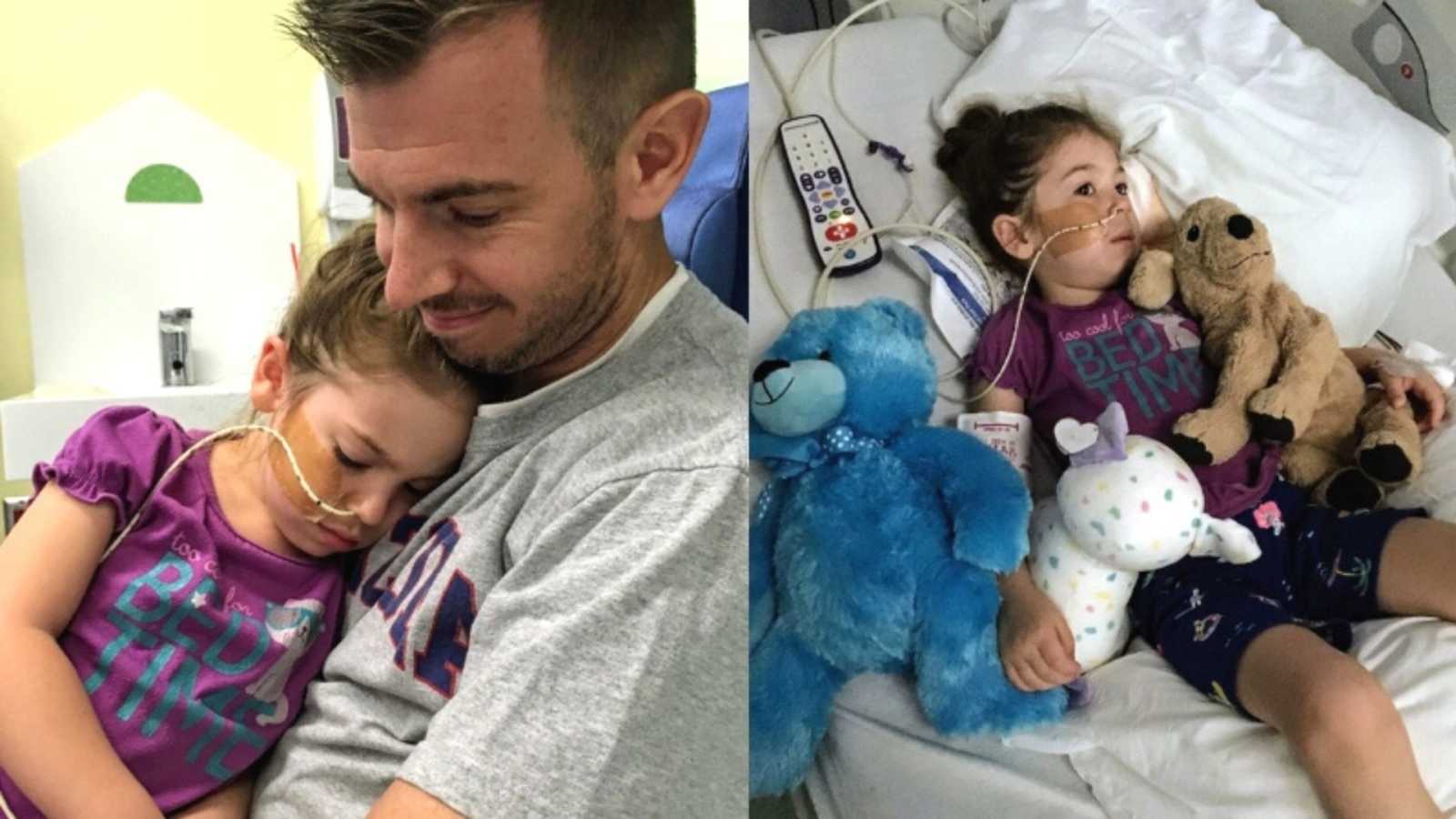Beginning Symptoms
“‘Dr. Diane, something is very wrong with Elizabeth.’ I watched in horror as her dad carried her down the hallway and into one of the exam rooms. She looked stiff. She looked like she was in pain. Her face was grimaced. What in the world? Why was this very healthy four-year-old being carried in? My stomach sank.
Something was very wrong with Elizabeth.
I’d seen her a few days before, during her little brother’s checkup. I couldn’t help but notice how quiet she was being. She sat still, in a corner. This was a child that usually loved to bop all over the room.
‘Elizabeth, kiddo, you feeling okay?’
‘She’s not feeling well. She’s had a little fever and seems under the weather’, said her mom Heather.
I checked her out, looking in her mouth and ears, and listened to her heart and lungs. She looked fine.
‘I think this is something viral. Why don’t you let her rest this weekend and let me know how she’s doing next week?’
Little did I know ‘next week’ meant three days later, her dad would be carrying her like a limp, broken doll into our office.
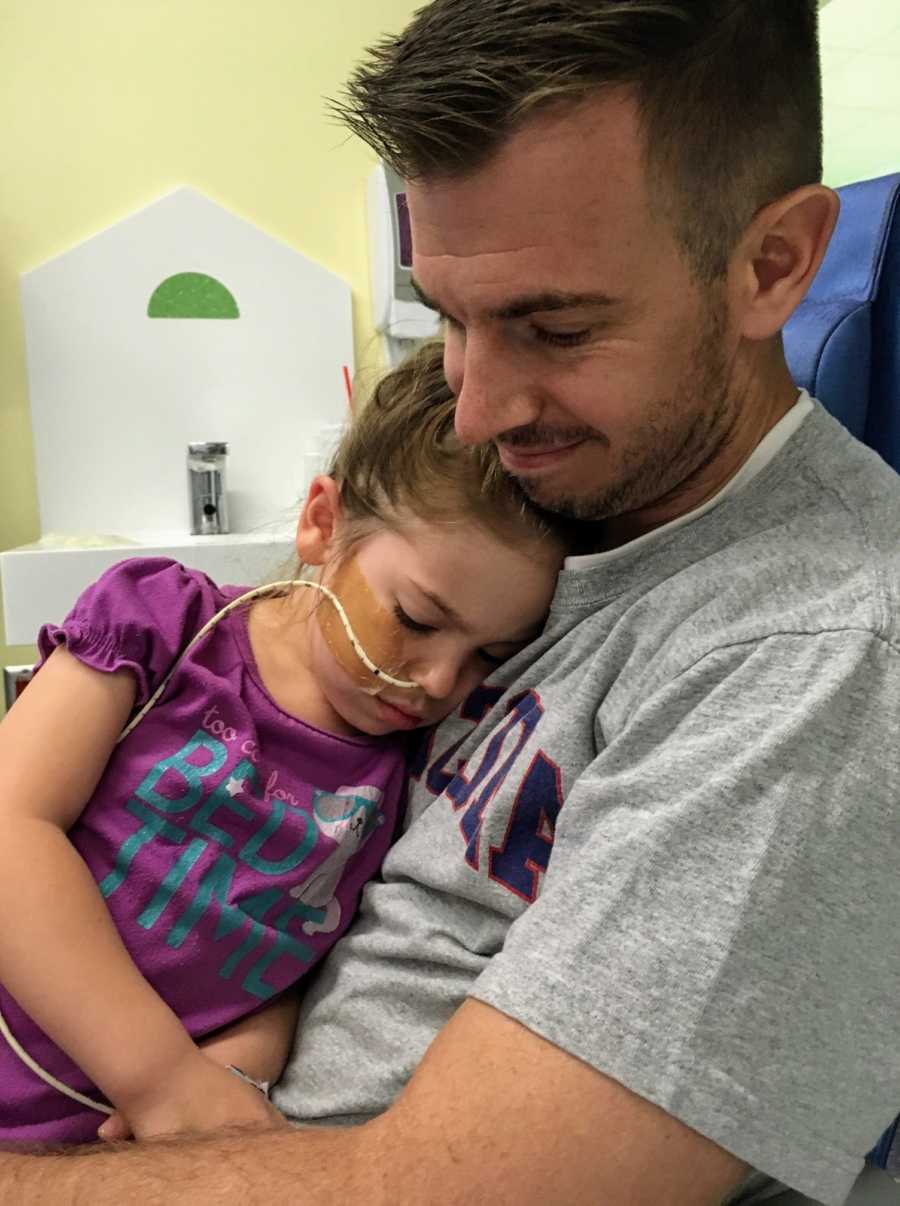
Nurse practitioner Tara Haraldson and I ran right behind them into the exam room.
She screamed in pain whenever her head was turned. Her neck was stiff, rigid. She hadn’t been eating much and wouldn’t drink. She was having a hard time talking. I was really worried she had meningitis. She was in so much pain she had to lay on the floor of her parent’s car to get to the office.
‘Things got much worse yesterday. We took her to the ER earlier this weekend, but they thought maybe it was just pneumonia, so they tried antibiotics. Her neck pain started that night and has only gotten worse. She can’t turn her head and she’s hurting so much we can barely move her.’
A Diagnosis
I sent her to Cook Children’s Emergency Room via ambulance. I called the ER doctor to let them know she was coming. That physician also thought it was likely meningitis. We agreed she needed a brain MRI and a spinal tap right away.
Barely one hour later, the ER doctor called me – ‘It’s acute flaccid myelitis.’
‘WHAT?!’ – I nearly spit out my drink.
This was almost a myth. A pediatric rarity. ‘The rare polio-like illness that’s affecting kids across the country’. A disease that affected less than one child in a million. I’d only read about this in medical journals. What in the world was it doing in my office – heck, in my city…. in my state?
‘Acute Flaccid Myelitis.’ The words rang in my head for hours after I got the phone call. I struggled to remember what I had learned about this rare disease in years past. I had certainly never seen it in person – nor had any doctor I knew.
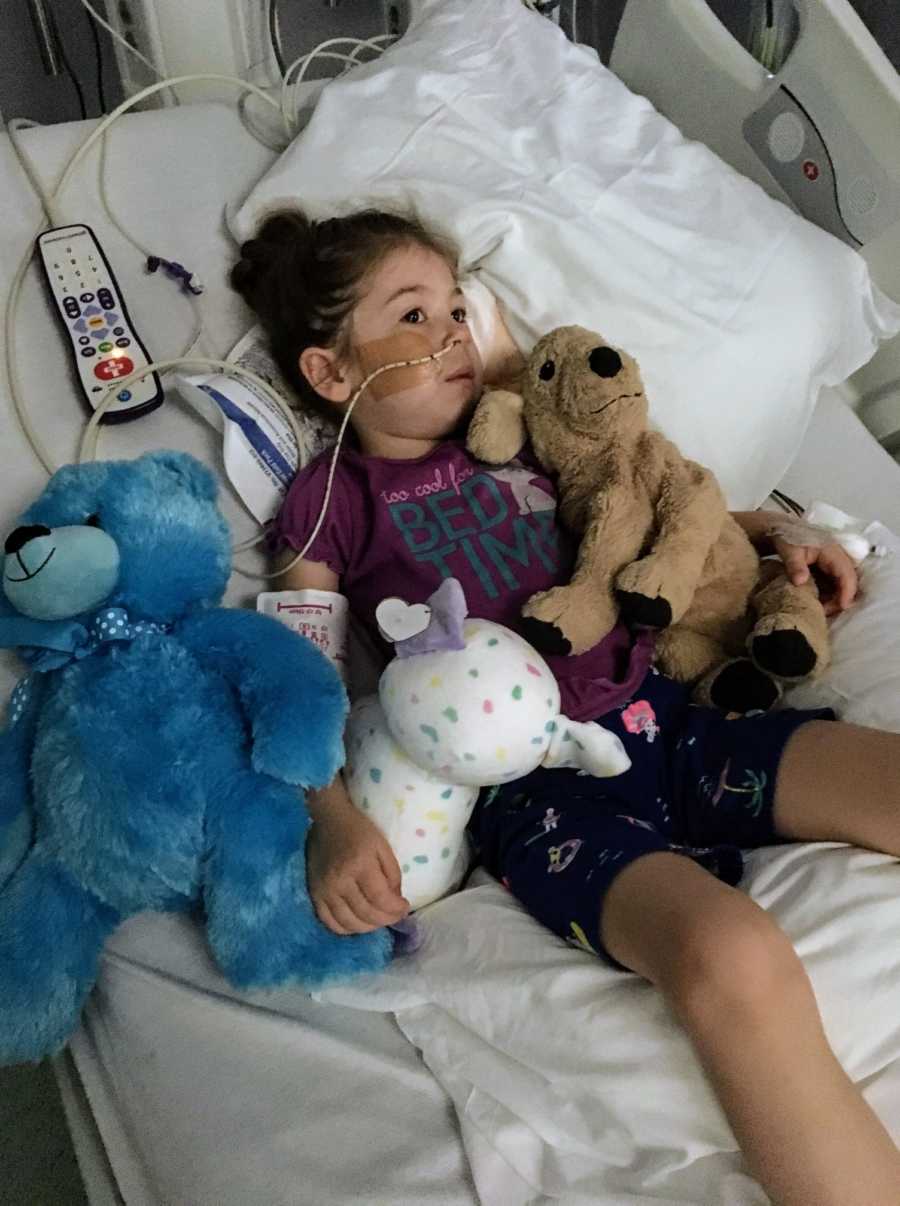
Elizabeth’s AFM was found via her brain MRI. They wheeled her into the ER and took her straight to the MRI machine. The radiologist watched as the images loaded on the screen. She had color changes on it, spanning from the bottom of her brain (the brainstem) all the way down her spinal cord. The radiologist knew what it was in a matter of minutes and called the ER doctor immediately.
What Is Acute Flaccid Myelitis?
As I sat in my office staring into space that afternoon, I’d remembered there was an outbreak of this disease in Colorado in 2014. The headlines were splashed all over the front of my medical journals as a warning. Watch out for this, pediatricians! Keep your eyes peeled for this awful polio-like illness. Thankfully, the cases had slowly vanished, and I hadn’t heard about it for a while. Until now.
Why do we keep calling it a ‘polio-type illness’? Well… because this disease looks exactly like polio. Except, it’s not polio. It’s a brother of polio – not a cousin, or a distant relative – a brother. And it is a terrifying reminder of what polio used to be (and hopefully will never be again).
Polio, caused by the poliovirus, is in the enterovirus family. There are hundreds of enteroviruses. Stay with me.
Enteroviruses are everywhere. Literally everywhere. In my office daily. In your office. In schools. On the grocery store cart. On that door handle. Enteroviruses make millions of people sick yearly with common colds, tummy bug-type symptoms, hand foot and mouth disease, and bad coughs.
Deep breath. It’s okay. Viruses. Are. Everywhere. And it’s fine if your kiddo has symptoms of a tummy bug or a cold right now – I don’t want to cause a panic, and your child will very likely not get AFM. I just want you to know the facts and be educated on this. Elizabeth’s disease is VERY rare and we’re not even 100% sure if it’s related. But we’re suspicious.
We think (well…smarter people than myself at the CDC think) that this disease is caused by one of the enteroviruses in particular, known as Enterovirus D68. Could it be caused by things in our environment? Maybe. Could it be caused by our genetics? Sure. Why did Elizabeth’s body allow this common virus to attack her nervous system? Was it something in her genes? Has she been exposed to something environmentally that the majority of the rest of us haven’t? We don’t know.
But there were some big epidemiology studies that linked a big uptick in D68 at the same time an outbreak of AFM happened in Colorado in 2014. And when kids were quickly tested soon after they had limb weakness, it was found in many of them:
‘In the 2014 US outbreak the number of EV-D68 cases increased at the same time as polio-like illness in children. In addition, the outbreak of EV-D68 subsided around the same time as the cases of AFM, with cases of both decreasing in October 2014. As mentioned previously, Sejvar et al. detected EV-D68 in eight of 17 respiratory specimens from patients with AFM collected no more than 7 days from onset of limb weakness.’
Every kid with this disease has not tested positive for it (Elizabeth didn’t). We look for evidence of viruses in the blood, in the cerebrospinal fluid, and in the blood. We make our best guesses. Viruses are very small, and sneaky.
If AFM is not caused by a virus, but something else…it hasn’t made itself known yet.
I do think it’s caused by a virus, because of what I’ve read about the outbreaks. 80% of kids with this disease in the U.S. have had a respiratory illness, or a fever a few days before starting to show the scary neurological symptoms.
Time In The Hospital
Back to Elizabeth, the heroine of my story. While in the ER, they noticed she couldn’t stand without severe dizziness. And that her right arm wasn’t working very well. Her face was drooping on one side.
Her mother later told me that in the ER, the doctor said she may never walk again. She may need a breathing machine for the rest of her life. She may not live. They were absolutely terrified.
Her parents ran frantic google searches and called family across the state. I dug up every study I could find on the 2014 outbreak and read until my eyes crossed. What could we do to help her?
She was wheeled up to the Cook Children’s Pediatric Intensive Care Unit for extremely close observation. They were worried her breathing muscles might become weak, or her brain function might continue to decline.
I don’t think I slept more than 20 minutes that night. I know Elizabeth’s parents didn’t.
We were waiting to see what would happen to Elizabeth’s body. And there was nothing the ICU doctors, the infectious disease doctors, or the neurologists could do to stop this. Steroids, antibiotics, antiviral medications, other forms of therapy – all were deemed useless over the past few years. We were helpless.
So, we watched.
Elizabeth settled into her bed in the Cook Children’s Pediatric Intensive Care Unit. They hooked her up to machines to monitor her vital signs. They put a small tube down her nose to help her get food and nutrients. They had a ventilator ready in case she started having difficulty breathing. They propped her very weak, very flimsy right arm up on a pillow. Everyone watched her. The intensivists, the neurologists, the infectious disease doctors and I all wondered what the next 1-2 days held.
Would she stop breathing? Stop being able to swallow? Lose more bodily function, as so many other children afflicted with this awful disease had? Would her right arm, torso and face become permanently weakened?
There is no treatment for acute flaccid myelitis. None. Doctors have tried steroids, antiinflammatories, immune system medications, antivirals, antibiotics – and nothing changes its course.
So, we just had to wait. And see. And support her. And you know what? She didn’t get worse. The next few days in the ICU lead to no changes. She had peaked. Plateaued.
Recovery
She started sitting up. Watching TV. Talking more. The arm and face weakness persisted, but she was able to move around more. Her neck was still very painful…but it was more tolerable.
She was transferred to the rehabilitation unit at Cook Children’s and for the next month worked with the pain management doctors, physical therapists, speech therapists, and occupational therapists who all wanted to help her regain her old abilities.
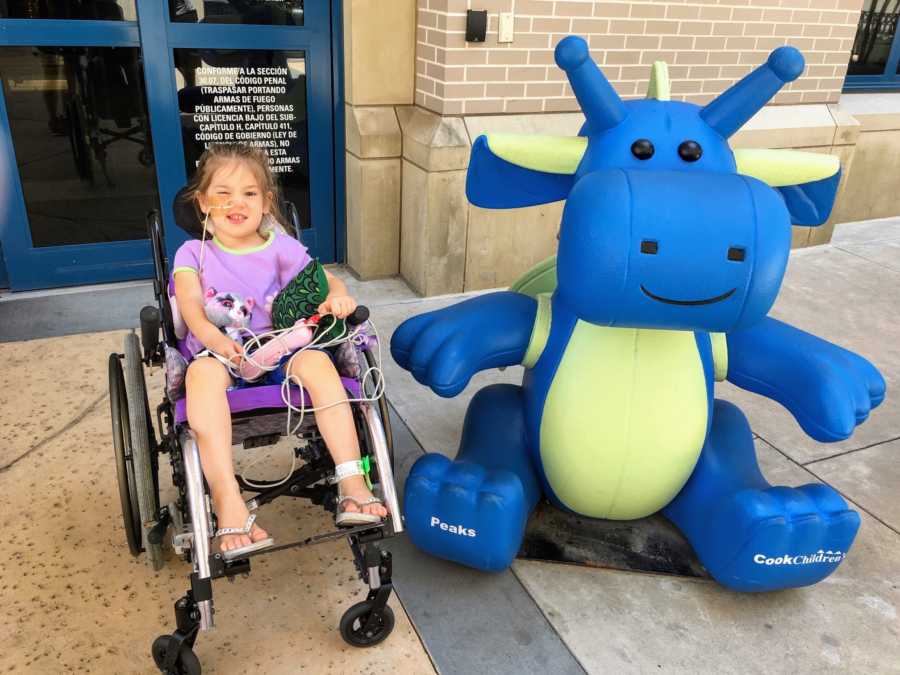
Elizabeth’s family is a close-knit group of kind, fiercely loving people with strong faith. They were with her every step of the way and drove miles to be with her. They prayed daily. I truly believe this played a huge role in Elizabeth’s amazing success. When I visited Elizabeth in the hospital, there were never less than 4 or 5 family members in her room. This spoke worlds to me about the healing powers of faith, and love.
To this day, Elizabeth has not made a full recovery. She cannot lift her right arm up past her shoulder. Her family and therapists are still working on her arm strength, her neck strength and movement, and her torso strength. But her speech is almost back to normal. And she can walk and run and play easily. And her smile is back. And that makes me smile.
This past weekend I watched Elizabeth compete in the Cook Children’s ‘Tri My Best’ Triathlon, which was put on by the Cook Children’s Rehabilitation team. I got to watch her shine as she biked, ran, and – her favorite – swam alongside other children who have been fighting their own battles. I watched this little warrior with tears in my eyes. Aren’t children amazing? Their resilience, hard work, honesty, and unfaltering faith is something we could all learn from.
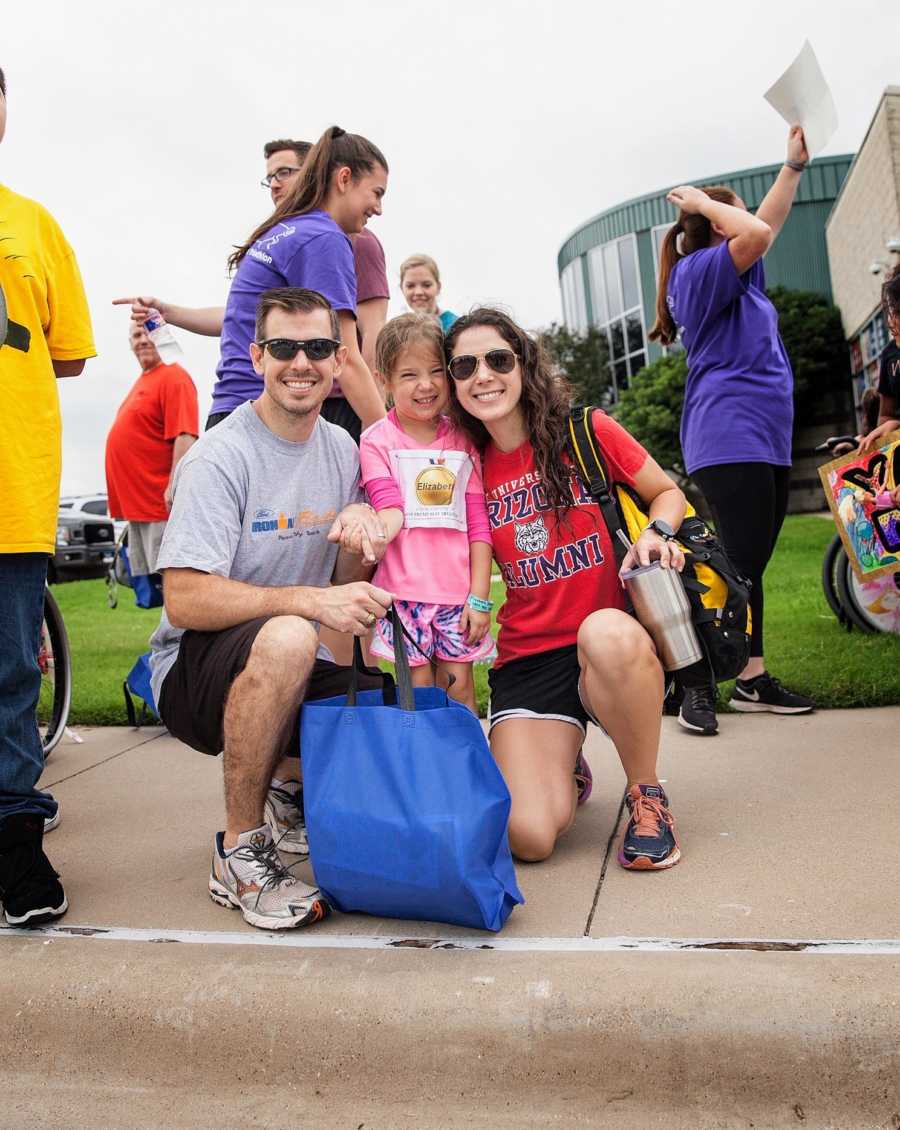
Raising Awareness And Hope
I hope you have enjoyed Elizabeth’s story. I didn’t write it to scare you, or make you worry. The truth is, less than one in a million kids get this disease. And no matter what the headlines say or what social media says, it’s very rare and unpredictable.
None of Elizabeth’s close family have gotten sick, though I am sure one or more of them may have come in contact with the virus that we think causes this.
I wrote it because I am proud of my hospital system. Cook Children’s has a phenomenal team of ER doctors, radiologists, intensivists, infectious disease doctors, therapists, nurses, neurologists, and pain doctors that came together to help Elizabeth. I am proud and honored to be in their company.
I wrote it because I think Elizabeth is an amazing child. She is strong, determined, and has an unfaltering spirit.
I wrote it because I love her family. Her family’s actions are a shining example of what love and faith can do for a child’s health.
I’ve typed up her story so that a worried parent somewhere, sometime, sitting in an ER, can have something to read, and gain hope from, and learn from.”

This story was written by Dr. Diane Arnaout of Cooks Children’s in Fort Worth, Texas. For more information visit the Cooks Children’s newsroom here. Submit your story here, and be sure to subscribe to our best love stories here.
Do you know someone who could benefit from this story? Please SHARE on Facebook or Twitter

